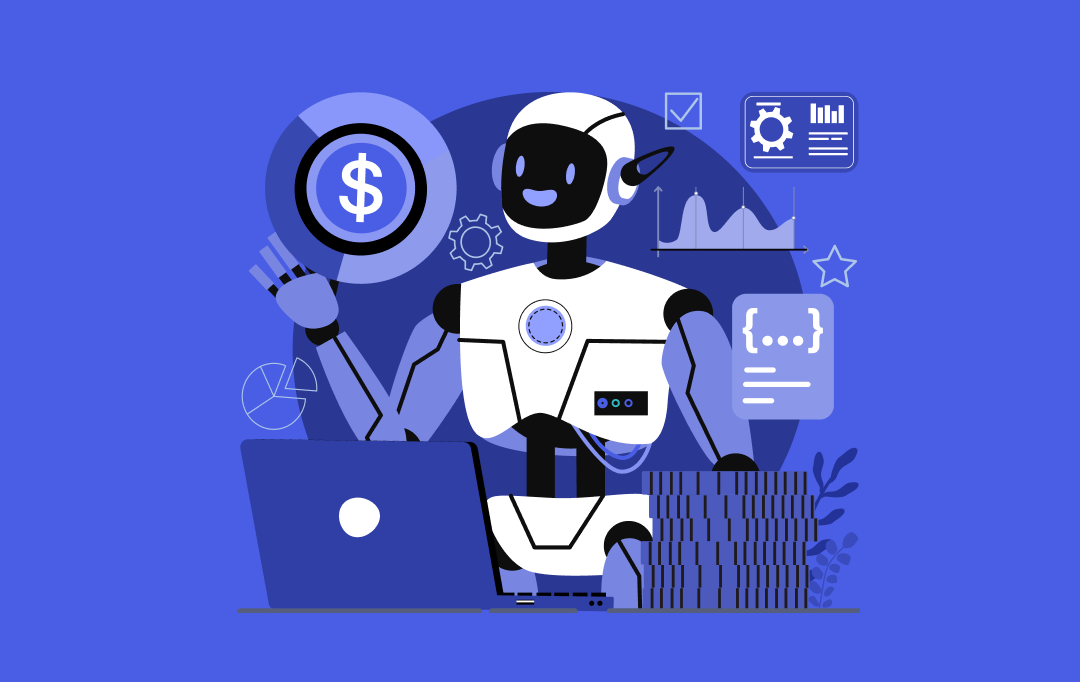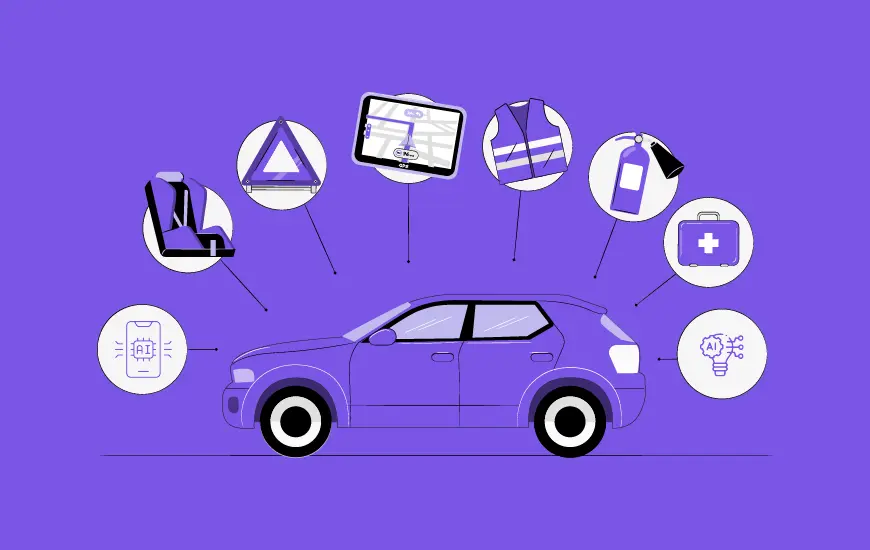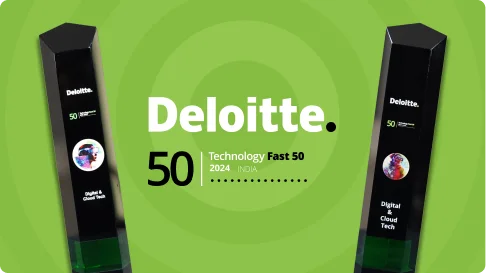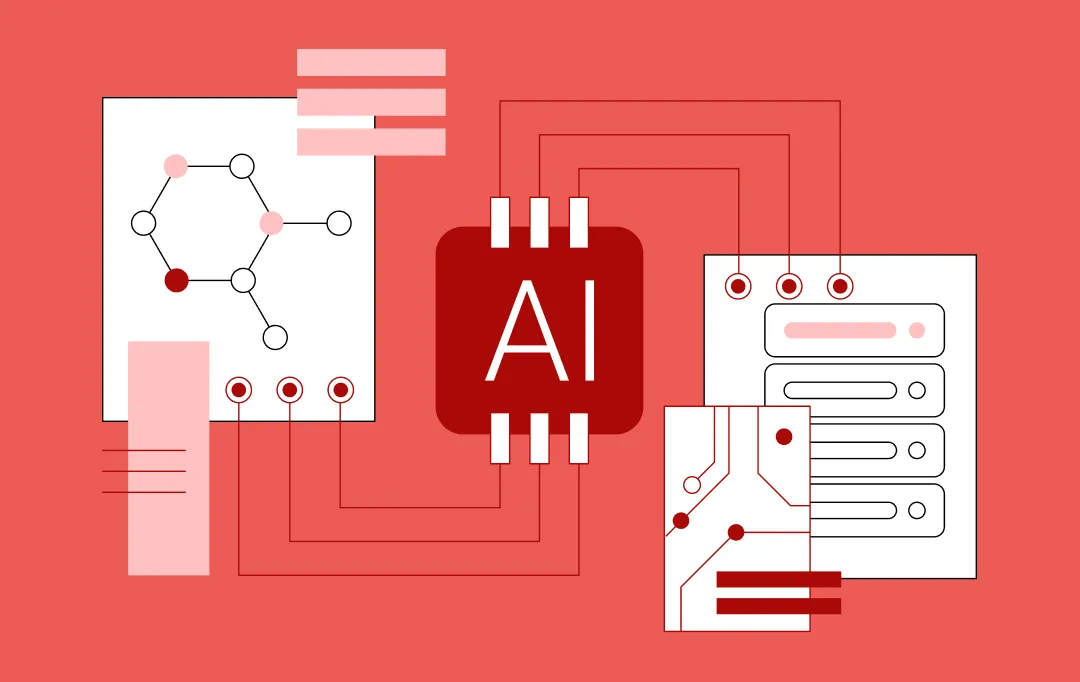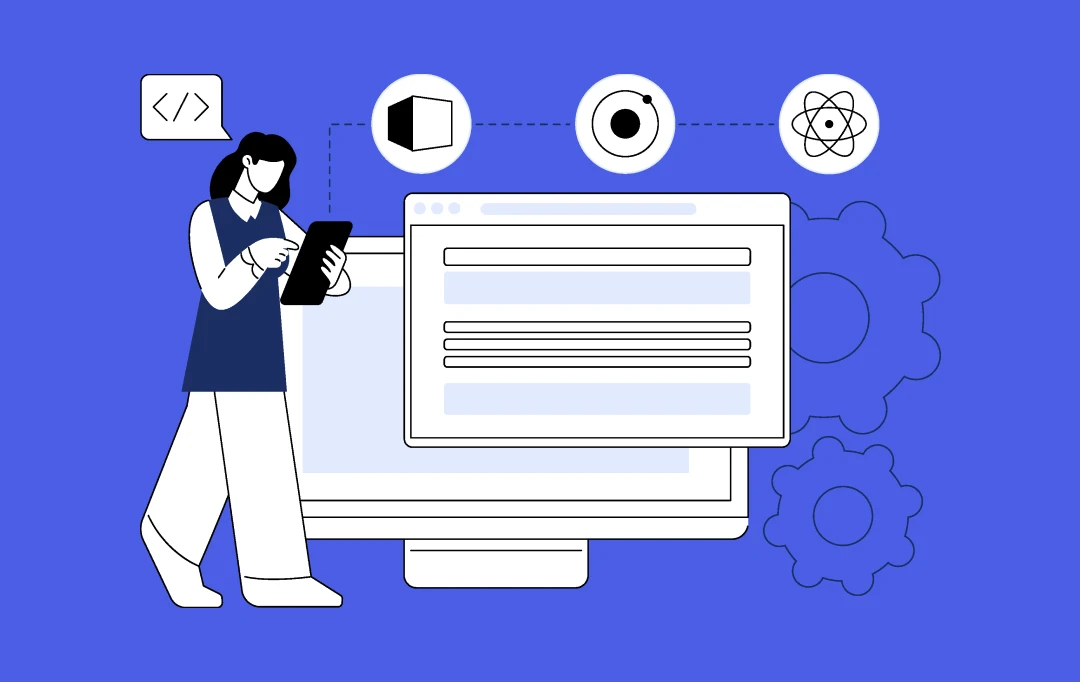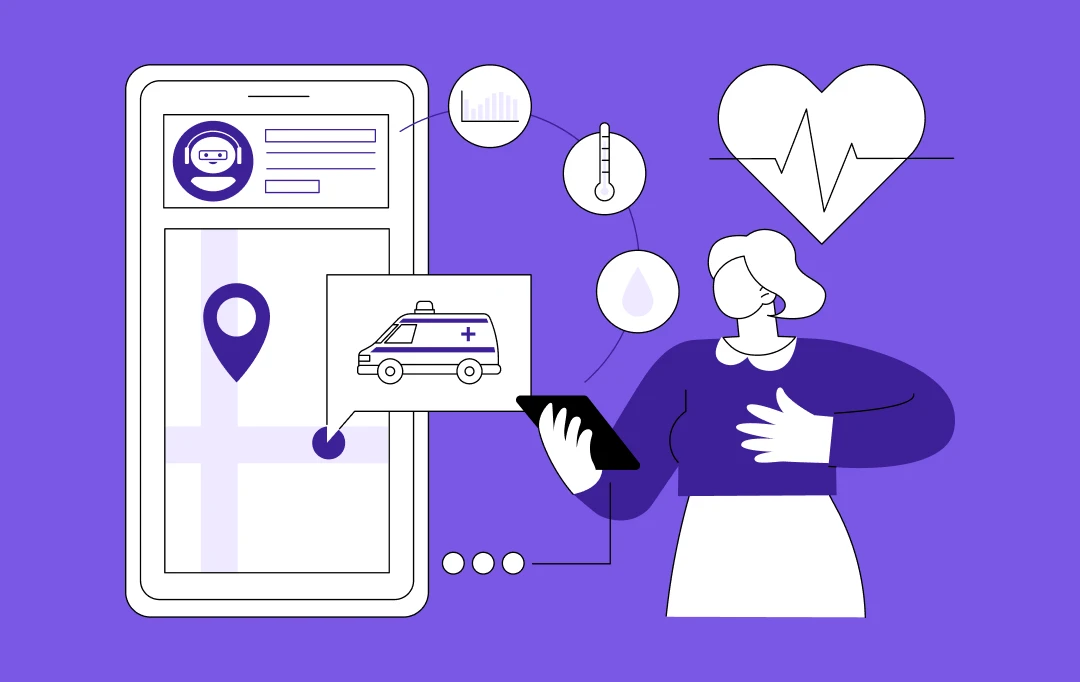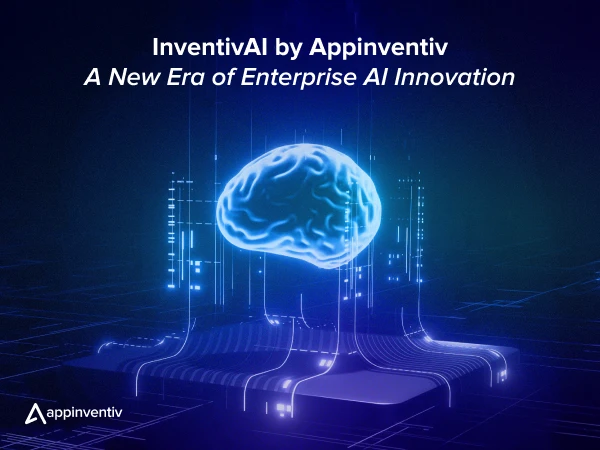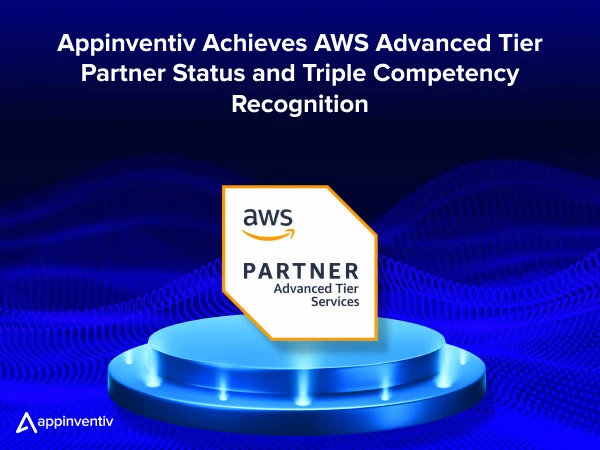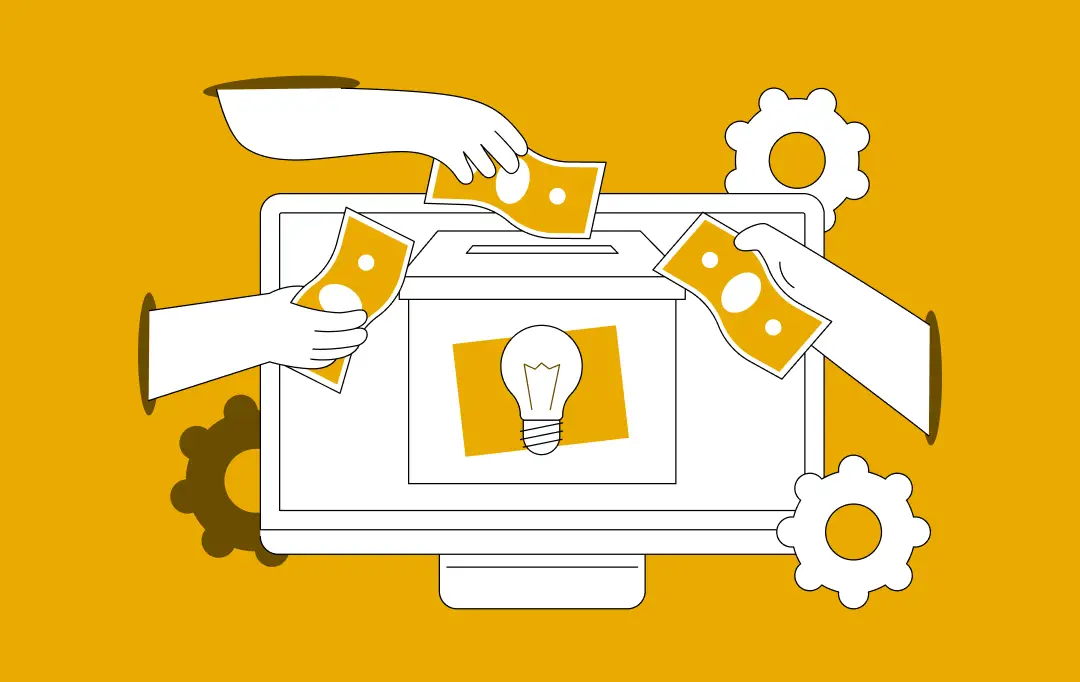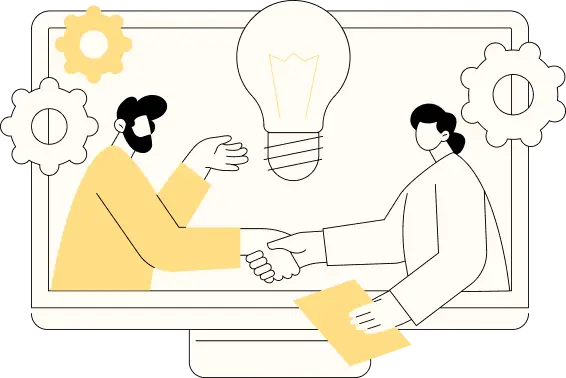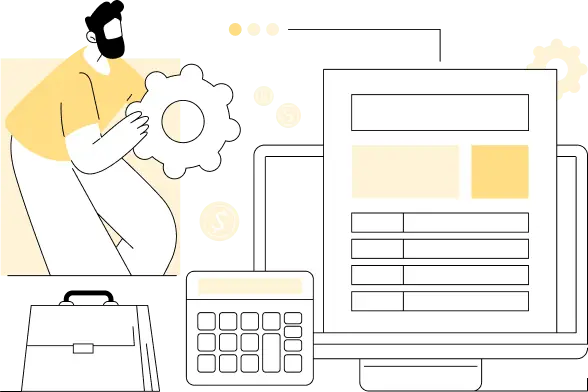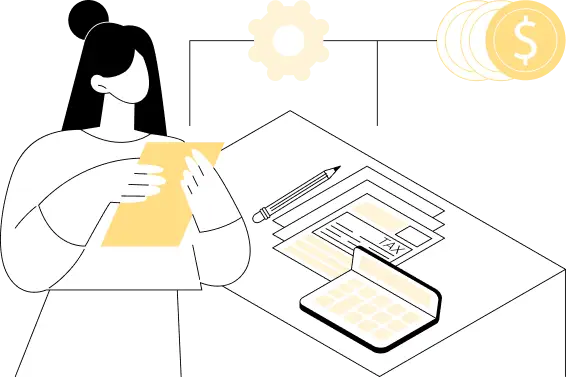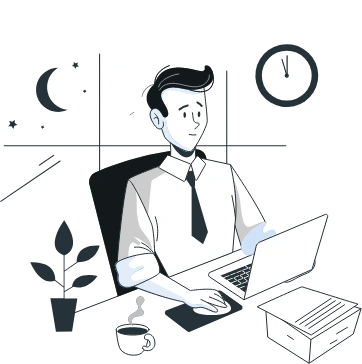- A Glimpse into the Utility Billing Software: Playbook for Smarter Operations
- Custom Utility Billing Software vs Off-the-Shelf Solutions: What’s Right for You?
- Business Benefits of Utility Billing Software
- No More Revenue Leaks from Human Error
- Customers Pay Faster, You Stress Less
- Say Goodbye to Spreadsheet Nightmares
- Complaints Transform into Compliments
- Your Business Ideas Move at Lightning Speed
- Catch Problems Before They Cost You
- Audits Become Painless Instead of Panic
- Grow Your Business without Breaking It
- Industries That Benefit from Utility Billing Tools
- Municipalities & Government Utilities
- Energy & Gas Providers
- Property Management & HOAs
- Smart Cities & Industrial Complexes
- Broadband/Telecom & District Services
- Step-by-Step Development Process for Utility Billing Software Development
- 1. Define Your Business Needs
- 2. Research and Plan the Software
- 3. Choose the Right Tech Stack
- 4. Design the User Interface (UI)
- 5. Build Core Features
- 6. Add Advanced Features
- 7. Test the Software Thoroughly
- 8. Launch a Pilot Program
- 9. Deploy and Monitor the Software
- 10. Provide Ongoing Support and Updates
- Must-Have Features of Utility Billing Software
- Essential Features of Utility Billing Software: Building a Future-Ready Billing System
- Advanced Features of a Utility Billing Software: A Pathway to Stand Out
- Cost to Develop a Custom Utility Billing Software
- Factors Affecting the Utility Billing Software Development Cost
- Key Challenges in Developing Utility Billing Software & How to Overcome Them
- Planning for Complex Billing Rules
- Ensuring Data Accuracy
- Integration with Existing Systems
- Handling Security and Compliance
- Scaling the Software for Growth
- Top Utility Billing Software Development Trends That Businesses Must Understand
- 1. Internet of Things (IoT) & Smart Meter Integration
- 2. AI-Powered Billing Predictions
- 3. Self-Service Customer Portals
- 4. Mobile-First Platforms
- 5. Blockchain for Billing Security
- 6. Green Energy Tracking and Billing
- 7. Automated Dispute Resolution
- 8. Advanced Data Analytics
- Why Appinventiv is the Right Partner to Develop Your Utility Billing Software
- FAQs
- Q. What is utility billing software?
- Q. How much does it cost to build utility billing software?
- Q. How long does it take to develop utility billing software?
- Q. What are some of the ways to reduce the utility billing software development cost?
- Q. What are some of the most common utility billing software that businesses can leverage?
- Q. What are the benefits of developing a custom utility billing software instead of off-the-shelf tools?
- Q. What is utility billing software?
- Q. How to develop utility billing software?
- Q. Why are businesses shifting from manual to digital utility billing?
- Q. What does it take to build a utility billing platform?
- Q. Why choose Appinventiv as your utility billing software development partner?
Key takeaways:
- Manual billing leads to errors, delays, and customer dissatisfaction.
- Utility billing software automates invoicing, payments, and usage tracking.
- Custom solutions offer better scalability, compliance, and control.
- Core features include CIS, billing engine, AMR, and payment integration.
- Advanced tools like AI, smart meters, and blockchain enhance performance.
- Development costs range from $40K to $400K based on scope and features.
If you are a firm dealing with utilities like water, gas, electricity, internet, or waste management services, you must have wondered why billing errors, delayed invoices, and slow payments cost you so much yearly. Even the most well-run utilities sometimes struggle with cash flow, customer complaints, and manual reconciliation issues.
The biggest curveball is the outdated conventional billing system, which is overly manual.
Today, a billing system is not just about sending invoices; it plays a significant role in ensuring daily operations run more smoothly. That is why many utility companies are reinventing their billing systems, focusing on automating them while reducing operational overheads.
This is where Utility Billing Software Development makes a real difference.
Whether you are running a utility company or building software for one, a smart billing system helps you send accurate invoices, track usage in real time, collect payments faster, and offer a better experience to customers. It also allows businesses like yours to grow without overloading your teams or making costly compliance mistakes.
But here is the thing: Building utility billing software is not just about adding a payment option. It is about creating a system that can manage different rates, taxes, billing cycles, payment options, and easy self-service for customers, all while keeping things hassle-free. It might seem like a lot, but when done right, it can give your business a real advantage and help you grow smoothly.
In this blog, we will guide you through a comprehensive roadmap that provides a clear and straightforward path to get started. Here, we’ll cover key features you should include, the full process from planning to launch, and the development costs you should be ready for.
We can help you develop a utility billing software that seals leaks and accelerates cash flow.
A Glimpse into the Utility Billing Software: Playbook for Smarter Operations
Legacy billing systems are no longer equipped to handle the growing complexity of utility operations. With rising customer expectations, regulatory pressure, and increasingly tight market margins, utility providers are being compelled to adopt digital billing systems that are faster, more accurate, and designed for scalability.
Simply put, digital transformation in utility billing isn’t just a tech upgrade—it’s a strategic move.
Currently, the utility industry is facing serious challenges like fragmentation, rising costs, and the growing complexity of energy management. To stay competitive and meet customer expectations, utility companies are being pushed to adopt digital platforms that streamline operations and improve service quality. Thus, a modern billing system can help companies consolidate their billing operations, reduce manual work, cut operational costs, and deliver customers faster and more transparent billing experiences.
Additionally, a report from BCG also suggests that utility companies are under increasing pressure from regulators, investors, and customers to improve performance and reduce costs. The report highlights how digitizing operational areas, such as workforce management, can lead to significant efficiency gains, including a 50% increase in worker availability and a 25% reduction in routine job times.
Thus, to state the obvious, digitizing billing with custom utility software can help businesses reduce manual errors, ensure accurate bills, expedite payments, and provide customers with clearer information.
We can confidently say that the future of utilities will be shaped by digital adoption, and building strong, scalable billing systems is a crucial step for companies seeking to lead in this evolving market. Businesses that will invest in these solutions will position themselves to meet customer expectations, comply with regulatory requirements, and operate more efficiently.
By this point, you already understand the operational demands and strategic importance of utility billing systems. Before moving into execution, there’s one key decision to make: Should you build a custom solution or rely on an off-the-shelf product? The choice you make here will directly impact your system’s flexibility, compliance, and ability to scale.
Custom Utility Billing Software vs Off-the-Shelf Solutions: What’s Right for You?
When it comes to utility billing, one-size-fits-all tools rarely meet the needs of complex, multi-service operations. Off-the-shelf platforms may seem convenient upfront, but they often lack the flexibility, depth of compliance, and integration capabilities that enterprise utilities require. Here’s a side-by-side breakdown to help you understand why going custom offers a strategic edge:
| Criteria | Custom Utility Billing Software | Off-the-Shelf Solutions |
|---|---|---|
| Flexibility | Built to fit your exact billing models, workflows, and service types | Limited configuration; rigid structure |
| Complex Billing Support | Handles tiered rates, peak-hour surcharges, green energy, and multi-utility | Supports only basic rate structures |
| Integration Capabilities | Seamless integration with CRM, ERP, smart meters, and payment gateways | Often requires costly workarounds or third-party connectors |
| Compliance & Regulation | Tailored to your local, state, or global regulatory needs | Generic compliance may require additional customization |
| Data Ownership & Control | Full access and control over your data, logic, and audit trails | Vendor-controlled environments |
| Scalability | Easily scales with your customers, regions, and services | Scaling is often limited or expensive |
| Security | Built to match your internal security protocols and data privacy needs | General security may not meet enterprise-level standards |
| Long-Term ROI | Higher upfront cost, but long-term savings from automation, accuracy | Lower upfront cost, but higher hidden costs over time |
| User Experience (UX) | Fully branded, intuitive UI for both admin and customers | Generic interface not optimized for your use case |
| Support & Upgrades | You control the roadmap, updates, and feature rollouts | Dependent on the vendor’s schedule and roadmap |
After exploring the major differences in the build vs buy software approach for utility billing solutions, let’s now dive into the step-by-step process of building a custom utility billing software.
Business Benefits of Utility Billing Software
Implementing a robust utility billing software system delivers transformative benefits across operations, customer experience, and business growth. Here are the key advantages that make this investment essential for modern utility providers:
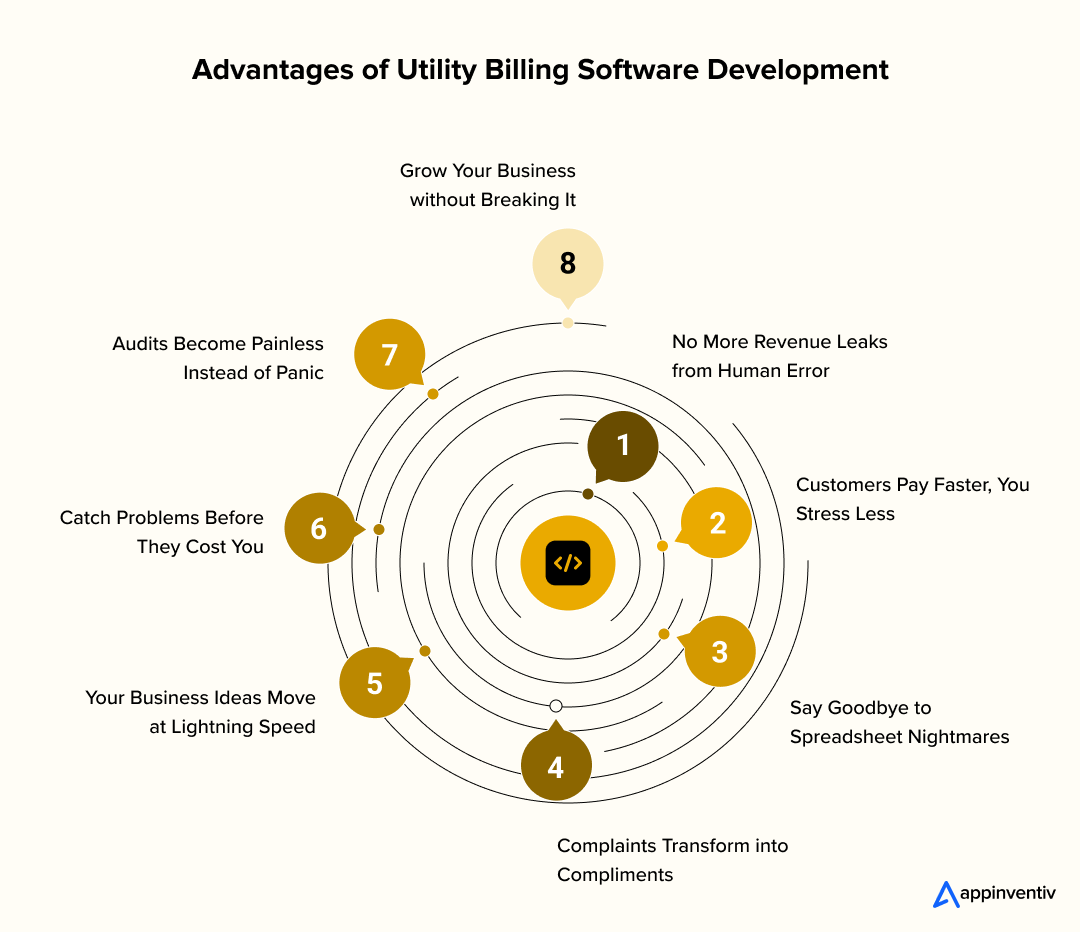
No More Revenue Leaks from Human Error
Your billing becomes error-free. The software catches meter reading errors before they turn into angry customer calls, and you stop losing money to billing mistakes. The result? Your revenue stays where it belongs – in your account, not tied up in disputes.
Customers Pay Faster, You Stress Less
Customers can pay online whenever they want, set up automatic payments, and get friendly reminders before bills are due. You’re not chasing payments anymore because the system does the heavy lifting. Your cash flow becomes predictable instead of a monthly guessing game.
Say Goodbye to Spreadsheet Nightmares
Remember those late nights with spreadsheets, double-checking calculations, and manually entering data? That’s over. Everything flows automatically from meter readings to final invoices. Your team can focus on actual customer service instead of data entry drudgery.
Complaints Transform into Compliments
When customers can see exactly what they’re paying for – with clear charts showing their usage patterns – the mystery disappears. They can manage their accounts online without calling your office. Suddenly, you’re getting thank-you emails instead of complaint calls.
Your Business Ideas Move at Lightning Speed
Want to offer time-of-use pricing? Green energy credits? Bundled services? You can launch all these new programs in weeks, not months. The software adapts to your creative ideas instead of limiting them.
Catch Problems Before They Cost You
The system flags unusual usage patterns that might indicate leaks or theft. You can catch revenue loss before it becomes a major problem. Plus, forecasting tools help you plan purchases and avoid costly surprises.
Audits Become Painless Instead of Panic
Everything gets tracked and documented automatically. When regulators come knocking or audit season arrives, you’re ready. No more scrambling to find paperwork or explain missing data.
Grow Your Business without Breaking It
Whether you’re adding new service areas, managing multiple properties, or expanding into different utility types, the platform grows with you. You won’t get into the tight spot where you need to start over with new systems.
In short, the benefits of using utility billing software are enormous. You spend less time fighting fires and more time running your business.
Industries That Benefit from Utility Billing Tools
Utility billing solutions integration is transforming operations across various sectors, each with unique requirements and challenges. Let’s explore the key industries that leverage these powerful tools to streamline their billing processes and enhance customer experiences:
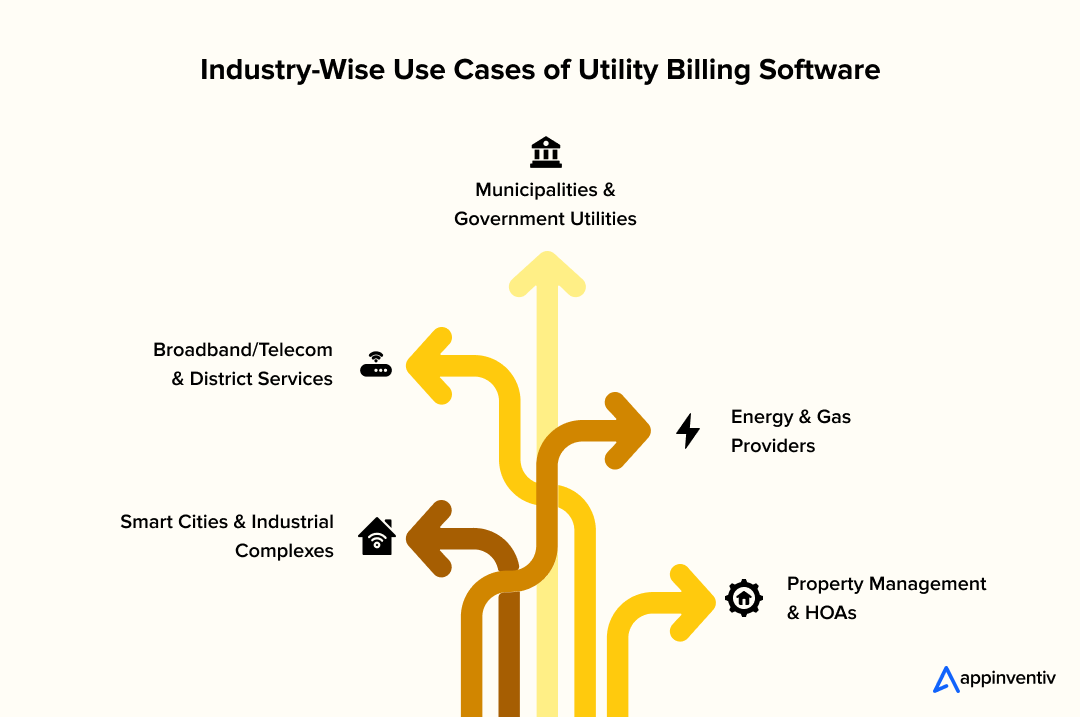
Municipalities & Government Utilities
City governments handle complex billing every day. Water departments, waste services, and district heating all need systems that actually work. Municipal operations benefit enormously from utility billing software through automated invoicing, payment portals, and regulatory reporting. Cities need utility billing software development for local government that connects seamlessly with existing financial systems.
Energy & Gas Providers
Electric and gas companies face intense competition and regulatory pressure. Their billing must handle complex rates while keeping customers happy. These providers rely on meter-to-cash automation and AMI integrations to process smart meter data automatically. Time-of-use pricing and peak demand periods require sophisticated software that manages variables accurately.
Property Management & HOAs
Property managers juggle responsibilities, and utility billing creates headaches for residents and owners alike. Multifamily properties benefit from RUBS implementations and submetering that allocate shared costs fairly. Tenant portals transform resident experience by allowing online bill viewing, automatic payments, and usage tracking. ERP integration streamlines operations by connecting property software with billing platforms automatically.
Smart Cities & Industrial Complexes
Modern developments need sophisticated utility management for multiple services across business parks and planned communities. Campus developments benefit from multi-service billing that handles electricity, water, cooling, and fiber through one interface. Analytics provide valuable insights through load forecasting, leakage detection, and usage pattern analysis. These systems support sustainability goals with real-time monitoring and environmental impact tracking.
Broadband/Telecom & District Services
ISPs and district energy operators face unique challenges with frequently changing service packages and varying usage patterns. Converged billing becomes essential for companies offering internet, phone, and TV packages with flexible pricing models. Customer portals improve satisfaction by allowing subscribers to view usage, change plans, and report problems online. Work-order integrations streamline field operations by connecting technician mobile devices with automated billing updates.
Step-by-Step Development Process for Utility Billing Software Development
Building utility billing software solutions requires proper planning and execution. Let us walk you through the main steps to creating a reliable and efficient system.
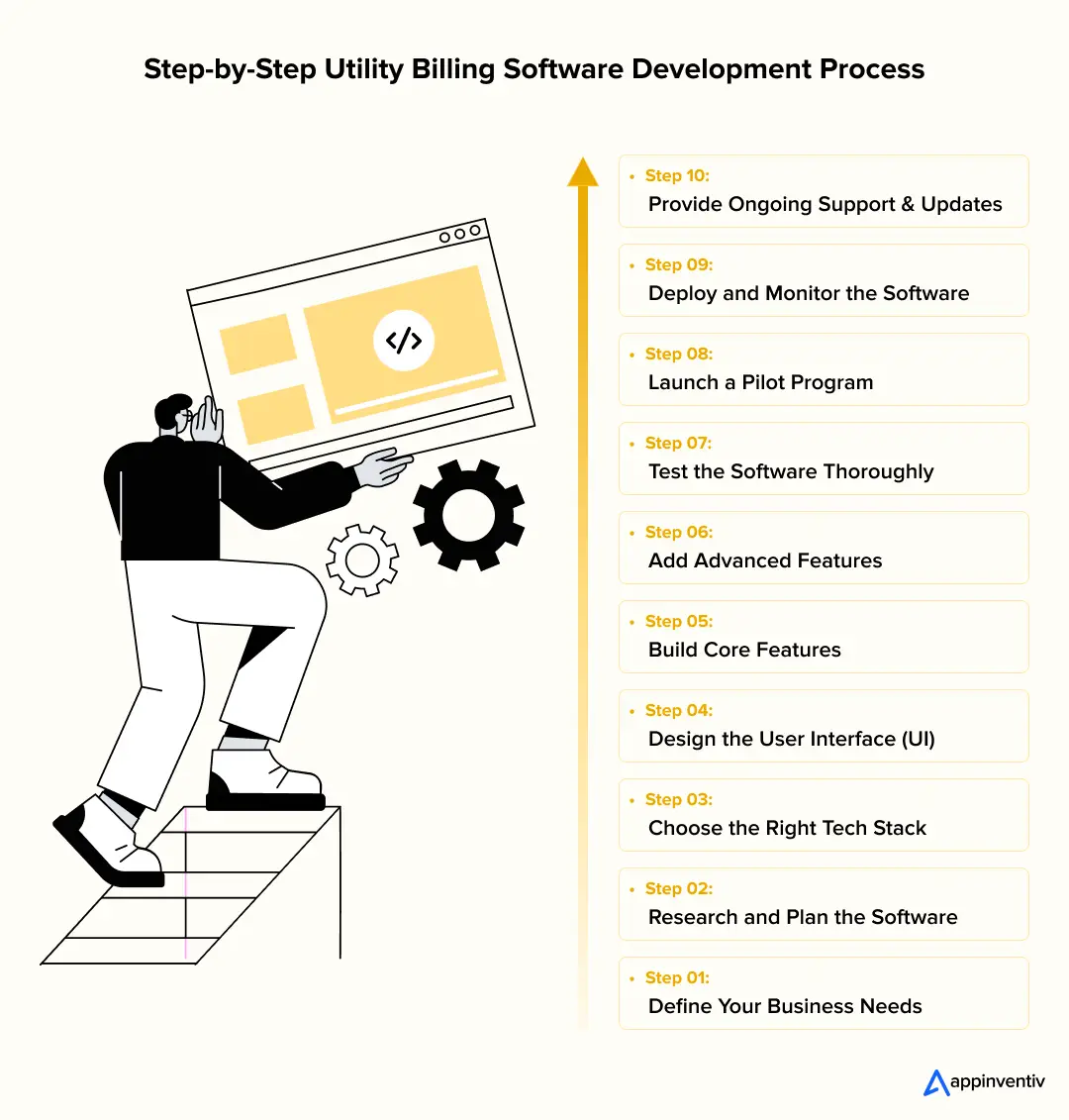
1. Define Your Business Needs
Every utility company operates differently. The first step is to clearly define your billing models, customer segments, service categories (such as water, electricity, and gas), and regulatory boundaries. You’ll need to map your workflows—how data flows from meters to invoices, what approval hierarchies exist, how customers make payments, and which teams manage billing operations. This forms the backbone of your software’s functional requirements and helps ensure you’re building something aligned with your real-world operations.
2. Research and Plan the Software
Once your needs are defined, move into planning. This includes researching competitor platforms, user expectations, and local compliance norms. It’s critical to define your project scope, build an MVP (Minimum Viable Product) roadmap, allocate budgets, and assign timelines. Planning also involves choosing between in-house development and partnering with a vendor, while preparing for infrastructure, security, and support requirements from the start.
3. Choose the Right Tech Stack
Your technology stack determines how future-ready and scalable your system will be. For backend development, options like Node.js, Java (Spring Boot), or Python (Django) are commonly used. On the frontend, frameworks like React or Angular ensure a responsive UI. You’ll also need a database system like PostgreSQL or MongoDB, and cloud platforms like AWS or Azure for scalability and uptime. Furthermore, if your software needs to integrate with CRMs, ERPs, smart meters, or payment gateways, make sure your tech stack supports API-driven architecture.
4. Design the User Interface (UI)
Designing an intuitive and responsive UI is crucial for both internal teams and end-users. Admin dashboards should offer role-based access, data visibility, and fast navigation. Additionally, customer-facing portals must be mobile-friendly, easy to use, and allow users to view bills, track usage, and make payments effortlessly. Remember that wireframes, user flows, and prototypes should be validated with users before moving into development, ensuring a seamless experience.
5. Build Core Features
This phase of utility billing software development is the backbone of your product. Start by building the foundational modules:
- Customer Information System (CIS) to manage customer data and service history
- Billing engine to automate rate calculations, billing cycles, taxes, and surcharges
- Meter data processing for manual or automatic reading ingestion (AMR/AMI integration)
- Invoice generation with downloadable PDF bills
- Payment gateway integration for credit cards, UPI, net banking, and wallets
Each module should be modular and testable, allowing for future upgrades without system-wide changes.
6. Add Advanced Features
Once the core system is stable, you can introduce advanced capabilities to enhance functionality and user engagement. Features like AI-powered billing predictions help customers budget better. Smart meter integration enables real-time usage tracking, while chatbots improve support efficiency. Adding multi-currency, multi-language, and mobile app access ensures wider accessibility and serves both domestic and international users.
7. Test the Software Thoroughly
Testing is not a one-time task—it’s an ongoing effort across multiple layers. Begin with unit testing to validate individual components, then proceed to integration testing to ensure that modules communicate correctly. Conduct load testing to simulate peak usage and security testing to identify vulnerabilities. Finally, run User Acceptance Testing (UAT) to verify that the system works as expected for real users. Accuracy in billing and reliability in payment processing are non-negotiable.
8. Launch a Pilot Program
Before going live organization-wide, test the system with a small, controlled user group—this could be a single department, a small locality, or a set of internal users. The pilot helps you identify edge cases, unexpected bugs, or performance bottlenecks under real-world conditions. Gather user feedback, refine workflows, and make necessary changes before the full-scale launch.
9. Deploy and Monitor the Software
Once pilot feedback is incorporated, the final version of the utility billing software can be deployed across your entire user base. At this stage, it’s essential to set up robust monitoring tools to track system performance metrics, such as uptime and latency. This ensures that billing cycles run smoothly without errors or delays, and that user satisfaction is monitored through support ticket trends and drop-off rates.
Additionally, you should establish protocols for data backup, disaster recovery, and infrastructure scalability to handle sudden surges in usage during peak billing periods, ensuring uninterrupted service and long-term reliability.
10. Provide Ongoing Support and Updates
Post-launch success depends on continuous support. Offer live technical support, set up a help center or chatbot for FAQs, and ensure all regulatory changes are reflected in software updates. Schedule regular performance audits, promptly patch security vulnerabilities, and utilize analytics to improve user experience and operational efficiency continually. A well-maintained billing system doesn’t just serve—it evolves with your business.
After examining the process of implementing multi-utility billing software, let us proceed to consider the costs associated with the entire utility billing software development lifecycle.
Must-Have Features of Utility Billing Software
To build a reliable and scalable utility billing system, you need the right mix of essential features that ensure operational efficiency and customer satisfaction. Once your core functionalities of utility billing software are defined, advanced capabilities can equip your platform with the intelligence, automation, and flexibility necessary to stay ahead in a competitive market.
Essential Features of Utility Billing Software: Building a Future-Ready Billing System
It is essential to focus on the core features first to develop a strong and reliable utility billing software for municipalities. These features, integrated during the utility billing software development process, ensure your billing system runs smoothly. Let us take a look at the essential features you must include:
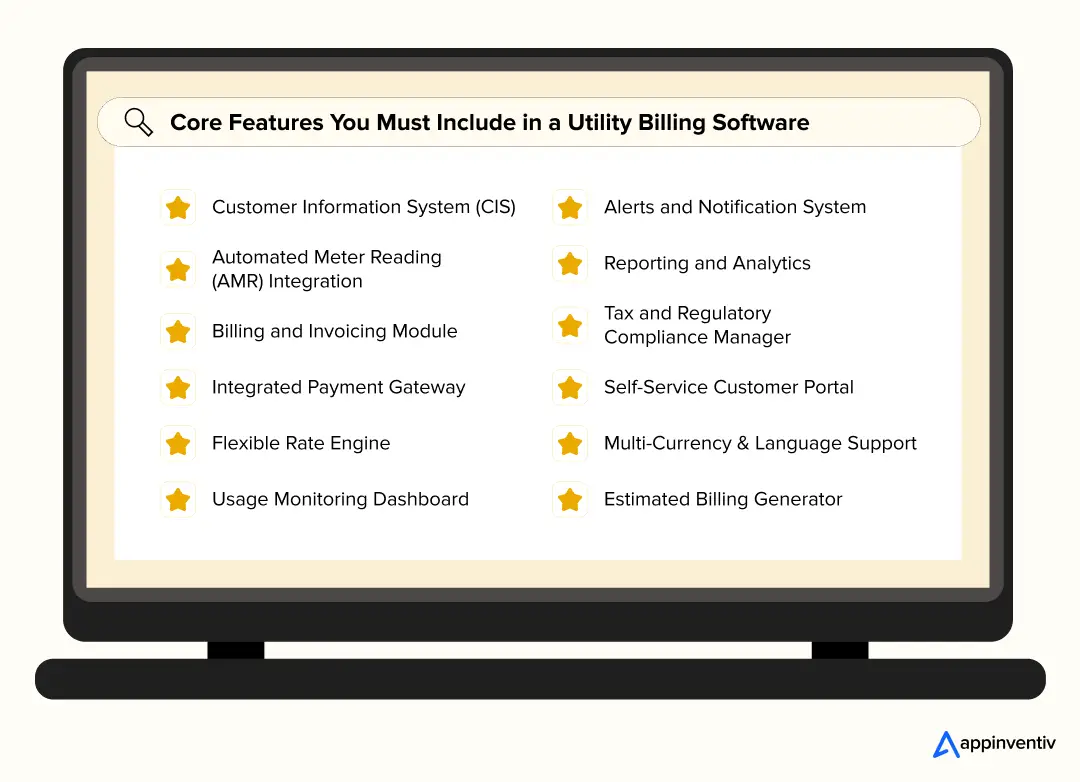
- Customer Information System (CIS)
Manage customer accounts, billing history, service details, and communication preferences from a single platform.
- Automated Meter Reading (AMR) Integration
Pull accurate meter readings automatically or manually from the multi-utility billing system to ensure timely and error-free billing.
- Billing and Invoicing Module
Create detailed, customizable bills based on real-time usage, fixed charges, taxes, and additional fees.
- Integrated Payment Gateway
Allow customers to pay through credit cards, debit cards, net banking, UPI, wallets, or auto-debit options within a secure system.
[Also Read: How to create a payment gateway? Cost, benefits, use cases, challenges, opportunities]
- Flexible Rate Engine
Set up and manage various pricing models, including flat rates, tiered rates, seasonal pricing, and usage-based charges, with ease.
- Usage Monitoring Dashboard
Provide customers with real-time insights into their consumption patterns to encourage more effective usage management.
- Alerts and Notification System
This feature of the utility billing software for municipalities sends reminders for bill due dates, payment confirmations, service updates, and outage alerts through SMS, email, or app notifications.
- Reporting and Analytics
Generate easy-to-understand reports on billing trends, payments collected, outstanding dues, and usage patterns for better decision-making.
- Tax and Regulatory Compliance Manager
Apply correct tax rates automatically and stay compliant with local, regional, and national utility regulations.
[Also Read: How to Develop Regulatory Compliance Software for the Financial Industry?]
- Self-Service Customer Portal
This will enable customers using the multi-utility billing system to view bills, track payments, submit service requests, and update account details without needing to call support.
- Multi-Currency and Language Support
Offer billing and payment options across different currencies and languages to serve a wider customer base if needed.
- Estimated Billing Generator
Create estimated bills based on past usage when real-time data is delayed, so billing cycles remain consistent.
Advanced Features of a Utility Billing Software: A Pathway to Stand Out
Once the basic setup is ready, adding advanced features to the multi-utility billing system can make it smarter, faster, and more valuable. Let us take a look at some important advanced utility billing software features in detail below:
| Feature | How does it help? |
|---|---|
| Dynamic Pricing Engine | Adjust pricing automatically based on real-time factors, such as demand, season, or usage patterns. |
| AI-Based Billing Predictions | Use AI to predict future bills based on past usage, helping customers plan their payments better. |
| Smart Meter Integration | Connect with smart meters for real-time data collection, faster readings, and improved accuracy. |
| Chatbot Support | Offer instant customer support through AI-powered chatbots for billing queries and payment help. |
| Mobile App Access | Provide customers with a mobile app to view bills, track usage, make payments, and receive notifications anytime. |
| Auto-Payment Setup | Let customers set up automatic payments to avoid missed or late payments easily. |
| Consumption Alerts | Send automatic alerts to customers when their usage exceeds certain limits to help them manage their bills effectively. |
| API Integration Support | Enable your multi-utility billing system to integrate with third-party tools, such as accounting software, CRMs, or ERP systems, for seamless workflows. |
| Blockchain-Based Billing | Improve billing transparency and security by recording transactions on a blockchain network. |
| Demand Forecasting Tools | Help utilities predict future demand and plan resources better based on historical and real-time data. |
| Advanced Fraud Detection | Use AI and machine learning to detect unusual billing activity and prevent fraud quickly. |
| Loyalty and Reward Programs | Enable businesses to set up reward points, cashback offers, or loyalty discounts for timely bill payments. |
Cost to Develop a Custom Utility Billing Software
The utility billing software development cost usually ranges between $40,000 and $400,000, or more, depending on your project requirements.
The final amount depends on several factors, including the size of the software, the number of features, the design complexity, and the level of system advancement you desire. A basic version of the software will usually cost less, while a fully featured, scalable platform will be at the higher end.
The additional costs cover project management, quality testing, and post-launch support. This provides a good starting point for planning your budget.
Gaining a clear understanding of your project’s needs before starting development can help you plan your budget more effectively. Choosing which features are must-haves and which can be added later in future updates can also help manage costs smartly.
A simple way to estimate your utility billing software development cost is by using this formula:
Estimated Project Cost = (Total Development Hours × Hourly Development Rate) + 15 to 20% Additional Costs
Factors Affecting the Utility Billing Software Development Cost
Several factors affect the overall development cost, including the number of users you need to support, the number of payment methods, the type of customer portals you want, and whether you are adding advanced features such as AI billing, smart meter integration, or mobile apps. Each additional feature adds to the overall budget, but it also improves the value your software can offer.
Here’s a quick glimpse into the key factors that impact the custom utility billing software development cost in detail below:
| Factor | Explanation | Cost Impact Estimation |
|---|---|---|
| Number of Features | More features mean more development time, which increases the overall cost. | $5,000 – $30,000 (Basic features add smaller costs; extensive feature sets can add up to $30,000.) |
| Complexity of Features | Advanced features, such as AI billing, smart integrations, and predictive analytics, cost more to develop than basic ones. | $10,000 – $40,000 (Basic features cost less; advanced features like AI or smart meter integration can add significant costs.) |
| User Interface and Design | A simple design costs less, while a highly customized or interactive user experience can raise the budget. | $5,000 – $25,000 (Basic UI is less expensive; highly customized or interactive designs add to the cost.) |
| Number of Integrations | Connecting your billing system with CRMs, ERPs, or payment gateways will require extra development work. | $7,000 – $30,000 (Fewer integrations are cheaper; multiple or complex integrations increase costs.) |
| Testing and Quality Assurance | More complex systems require additional testing time to ensure everything functions smoothly and without errors. | $5,000 – $20,000 (Basic testing is less costly; complex systems require more extensive testing.) |
| Security Requirements | Strong security measures, such as encryption, fraud detection, and data protection, add to the overall cost and time of custom utility billing software development. | $7,000 – $25,000 (Basic security is less expensive; advanced measures like fraud detection add significant costs.) |
| Scalability Needs | Building a system that can easily grow with your business typically requires more planning, stronger architecture, and additional development hours. | $6,000 – $25,000 (Basic scalability is cheaper; robust, future-proof architecture increases costs.) |
| Post-Launch Support and Maintenance | Ongoing support, regular updates, and the addition of new features after launch also contribute to the long-term cost. | $5,000 – $20,000 (Initial support is less costly; ongoing updates and new features add to the budget.) |
Key Challenges in Developing Utility Billing Software & How to Overcome Them
Building custom utility billing software solutions can bring great value to your business, but it also comes with a few challenges. Let us look at some common issues you might face and how you can solve them.
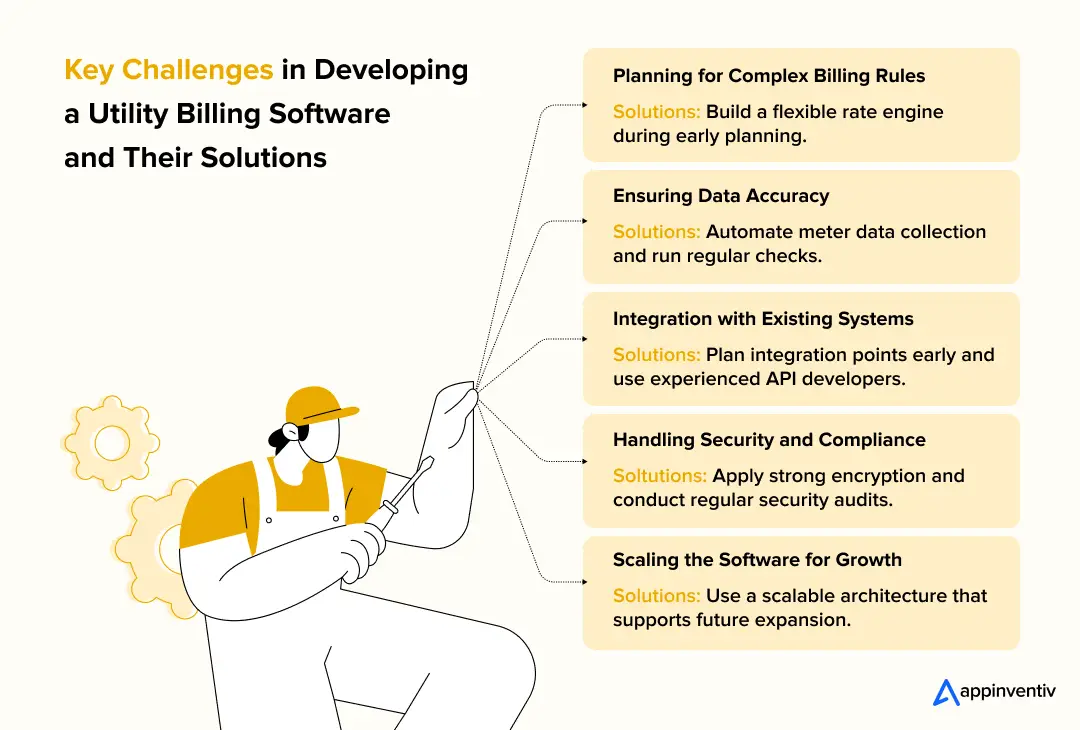
Planning for Complex Billing Rules
Every utility company has unique pricing plans, taxes, billing cycles, and discounts. Ensuring that all these rules are captured correctly from the outset is crucial.
Solution:
During the early planning phase, spend time mapping out all billing scenarios. Build a flexible rate engine that can easily handle changes without needing major system updates.
Ensuring Data Accuracy
Billing mistakes can happen if meter readings, usage data, or payment records are not handled properly.
Solution:
Automate data collection from meters and perform regular validation checks to ensure that the data flowing into the system is clean and accurate. Carrying out utility billing software development best practices can help minimize these risks by ensuring that data is consistently verified, updated in real time, and securely managed across all systems.
Integration with Existing Systems
Utility companies often utilize additional tools, such as CRMs, ERPs, or accounting software. Connecting the new billing system with these can be tricky.
Solution:
Choose a development firm that has experience with APIs and system integrations. Plan integration points early in the project to avoid last-minute issues.
Handling Security and Compliance
Utility bill management software handles sensitive customer data and payment details, making security a top priority.
Solution:
Implement strong security measures during the custom utility billing software development process, such as data encryption, secure payment gateways, and regular security audits. Stay updated on compliance laws.
Scaling the Software for Growth
As your business grows, the billing system needs to handle more customers, more data, and more transactions without slowing down.
Solution:
Use a scalable software architecture from the beginning. Plan for higher traffic, bigger databases, and future feature additions. Businesses can partner with a utility billing software development services firm to design flexible, cloud-based utility billing software that supports seamless scaling, maintains high performance, and easily adapts to new demands.
These are some of the key considerations in utility billing software development that you must keep in account when developing one for your business.
Top Utility Billing Software Development Trends That Businesses Must Understand
The world of utility bill management software is evolving fast with new technologies and customer expectations. Here are some trends that can help businesses build smarter, more future-ready billing systems.

1. Internet of Things (IoT) & Smart Meter Integration
More utility companies are moving towards real-time billing using smart meters. IoT and smart meters are transforming utility billing by providing real-time data from various sensors, enabling accurate usage tracking. Smart meters automatically send usage data to the system, making billing faster, more accurate, and easier for customers to track and manage.
2. AI-Powered Billing Predictions
Artificial intelligence helps companies predict customer usage and future bills. This enables customers to manage their payments more effectively and helps businesses minimize payment delays and defaults.
3. Self-Service Customer Portals
Today’s customers prefer solving problems themselves without calling customer care. Having a strong customer portal where users can check bills, track usage, and make payments has become a must-have.
4. Mobile-First Platforms
With mobile usage on the rise, utility billing systems are now being designed for mobile-first access. Businesses are building mobile apps and mobile-friendly dashboards to make billing and payments easier from anywhere.
5. Blockchain for Billing Security
Blockchain technology is being explored for use in utility billing to enhance transaction security and transparency. It provides a tamper-proof method for managing billing records and customer payments.
6. Green Energy Tracking and Billing
As customers move towards solar, wind, and other renewable energy sources, billing systems are also adapting. Companies now prefer a custom utility billing software development process that tracks traditional and green energy usage separately.
7. Automated Dispute Resolution
Handling billing disputes manually can cause delays in payments. New systems are using AI and smart workflows to quickly resolve disputes, issue corrections, and maintain customer trust without long waiting times.
8. Advanced Data Analytics
Utility billing is also becoming smarter with the power of data analytics. By leveraging customer insights effectively, companies can enhance billing operations, minimize errors, and deliver more personalized services. Here are a few ways utilities can leverage data analytics in their utility billing systems to enhance operational efficiency, improve customer satisfaction, and optimize revenue management.
| Use Case of Data Analytics in Utility Billing | How It Helps |
|---|---|
| Segmenting Customers for Targeted Services | Analytics allows utility companies to group customers based on location, consumption habits, or payment behavior. This makes it easier to offer special services or payment plans to specific groups who are more likely to respond. |
| Optimizing Billing Cycles | By studying customer payment data, businesses can choose billing dates and communication timings that lead to faster payments and fewer delays. It makes billing smoother for both the company and the customer. |
| Error Reduction | Analyzing large amounts of billing and usage data helps spot errors quickly. This enables companies to address issues promptly and update their systems to prevent similar mistakes in the future. |
We’ll whip up slick, future-ready billing systems that kill delays and lock in accuracy.
Why Appinventiv is the Right Partner to Develop Your Utility Billing Software
We hope this blog has helped you understand the importance of building a strong, flexible, and future-ready utility billing software. From essential features to the latest trends, having the right billing system can completely transform how your utility business operates and serves its customers.
At Appinventiv, we believe that choosing the right technology partner is just as important as selecting the right software strategy. As a custom software development services provider, we specialize in building utility billing platforms that are scalable, secure, and tailored to each business’s unique needs.
Here’s more on why we’re the ideal partner to bring your utility billing software vision to life:
- Industry Expertise: 10+ years of experience delivering custom software solutions.
- Award-Winning Expertise: Recognized as a leader in digital transformation by esteemed organizations like Deloitte, Clutch, Statista, and CIO Klub.
- Compliance Focus: As an ISO certified company, we build fully compliant software, ensuring your software meets industry regulations and standards.
- Smart Integrations: We integrate advanced technologies like smart meters, AI-powered billing engines, and mobile-first platforms.
- End-to-End Support: We manage the entire lifecycle, from development to ongoing support.
Our tech team of 1600+ experts works closely with you to design solutions that simplify billing operations, improve customer experiences, and ensure full compliance with industry standards. Furthermore, our custom utility billing software development process is designed to deliver secure, scalable, and fully integrated billing platforms with a strong focus on quality and speed.
Whether you are looking to integrate smart meters, build AI-powered billing engines, or launch a mobile-first billing experience, our team has the skills and expertise to make it happen. As a utility billing software development company, we focus on delivering high-quality software that supports your long-term growth, reduces operational costs, and strengthens your customer relationships.
Get in touch with us today to discuss your project needs. Let us help you build a utility billing platform that takes your business to the next level.
FAQs
Q. What is utility billing software?
A. Utility billing software is just like your digital billing assistant that never sleeps. It automatically calculates what customers owe for electricity, water, gas, or internet services. Instead of manually reading meters and typing numbers into spreadsheets, the software handles everything from usage tracking to sending invoices. I’ve seen companies cut their billing time from weeks to hours with these systems.
Q. How much does it cost to build utility billing software?
A. The custom utility billing software development cost usually ranges between $30,000 and $150,000. The custom utility billing software development cost usually ranges between $40,000 and $400,000. The exact cost depends on several factors like the number of features you want, the complexity of the billing rules, the level of customization, integrations with other systems, and the security standards you need to maintain. A basic version with essential features will cost less than a fully-featured, scalable platform with mobile apps and AI capabilities.
Q. How long does it take to develop utility billing software?
A. Developing a custom utility bill management software typically takes around 8 to 9 months. The timeline depends on the project size, feature list, and the number of integrations involved. A simpler platform with basic billing, payment, and reporting features can be developed faster, while advanced features like smart meter integration, predictive billing, and mobile apps will need more time for design, development, and testing.
Q. What are some of the ways to reduce the utility billing software development cost?
A. If you plan smartly, you can bring down the overall development cost of utility billing software for municipalities, without compromising on quality. Here are a few strategies you can use:
- Prioritize must-have features first and plan to add advanced features later as upgrades.
- Use pre-built APIs and libraries instead of developing everything from scratch.
- Choose a scalable architecture to avoid heavy redesigns in the future.
- Follow an agile development approach to manage budgets better and spot issues early.
- Invest in proper planning and requirement gathering during the process of developing utility billing software for municipalities to avoid major changes later.
- Work with experienced development teams who have handled utility or billing projects before.
Q. What are some of the most common utility billing software that businesses can leverage?
A. Businesses can leverage different types of utility billing software based on the services they offer, each designed to handle specific billing needs efficiently.
Water Utility Billing Software: Helps track water consumption, automate meter readings, and generate accurate bills for residential and commercial users.
Electric Utility Billing Software: Manages electricity usage, supports dynamic pricing, and ensures faster and error-free billing cycles.
Property Management Utility Billing Software: Assists property managers in allocating and billing utility costs across multiple tenants or units accurately.
Multi Utility Billing System: Handles billing for multiple services like water, electricity, and gas from a single unified platform, simplifying operations.
Utility Billing Software for Municipalities: Designed for city councils and local bodies to manage billing, collections, and reporting for public utilities effectively.
Q. What are the benefits of developing a custom utility billing software instead of off-the-shelf tools?
A. For businesses, the benefits of utility billing software go far beyond basic automation. A custom-built system aligns closely with your operational needs, offering flexibility, control, and long-term efficiency. Let us look at some of them below:
- Full control over billing rules, cycles, and payment methods
- Better customer experience with real-time tracking and self-service portals
- Smooth integration with your CRM, ERP, and accounting systems
- Fewer billing errors thanks to end-to-end automation
- Stronger data security aligned with your compliance needs
- Scalability to support multi-location or multi-service growth
- Long-term cost savings by cutting manual work and vendor dependency
Q. What is utility billing software?
A. Utility billing software is just like your digital billing assistant that never sleeps. It automatically calculates what customers owe for electricity, water, gas, or internet services. Instead of manually reading meters and typing numbers into spreadsheets, the software handles everything from usage tracking to sending invoices. I’ve seen companies cut their billing time from weeks to hours with these systems.
Q. How to develop utility billing software?
A. Building utility billing software requires serious planning and meticulous execution of the same. Here is a step-by-step development process for utility billing software
- Define Your Business Needs
- Research and Plan the Software
- Choose the Right Tech Stack
- Design the User Interface (UI)
- Build Core Features
- Add Advanced Features
- Test the Software Thoroughly
- Launch a Pilot Program
- Deploy and Monitor the Software
- Provide Ongoing Support and Updates
To gain an in-depth understanding of these steps, please refer to the above blog.
Q. Why are businesses shifting from manual to digital utility billing?
A. Manual billing is like using a typewriter when everyone else has laptops. With manual; approach, your staff has to spend days just entering meter readings. Digital systems eliminate human errors, speed up collections, and improve customer satisfaction with online payment options. Plus, automated utility billing process software development works 24/7 and never calls in sick. The cost savings alone usually pay for the software within the first year.
Q. What does it take to build a utility billing platform?
A. Building a utility billing platform requires three main things: technical expertise, industry knowledge, and patience.
You need developers who understand complex rate structures, payment processing, and regulatory requirements. The platform must handle thousands of accounts simultaneously while maintaining accuracy. Integration with existing systems like CRM and accounting software is crucial. Most successful projects involve utility industry experts working alongside software developers.
Q. Why choose Appinventiv as your utility billing software development partner?
A. Appinventiv brings deep utility industry experience combined with 10+ years of proven development skills. We have built billing systems for water utilities, energy companies, and property management firms.
Our team of 1600+ tech experts understands complex rate structures, regulatory compliance, and integration challenges. What sets us apart is our focus on user experience. We build software that both staff and customers actually enjoy using. Plus, we provide ongoing support after launch, which most development companies skip.


- In just 2 mins you will get a response
- Your idea is 100% protected by our Non Disclosure Agreement.

How to Build an RFID Asset Tracking System in The UAE?
Key takeaways: The success of an RFID asset tracking system is dictated by the quality of the custom software and middleware, which must transform voluminous raw tag data into actionable intelligence. Implementation of RFID systems requires a managed, multi-stage process, moving logically from Integration Consulting and architectural design to Continuous Monitoring and Optimization, which is…

How to Build a White-Label Grievance Management Software? Process, features, costs
Key Takeaways White-label grievance management software allows businesses to quickly implement, rebrand, and scale solutions without reinventing the wheel. The development process involves multiple stages, including requirement gathering, workflow design, tech stack selection, and ensuring compliance and scalability. Key features include multi-channel intake, automated routing, customizable workflows, AI-driven categorization, and built-in compliance and security. Costs…
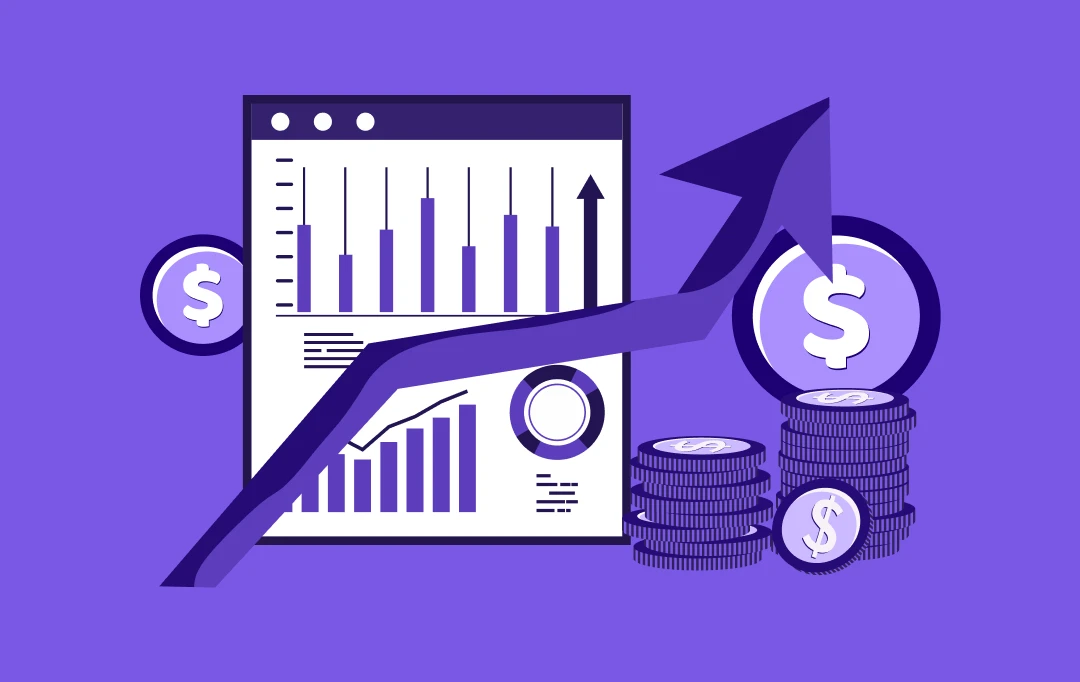
How to Build a Demand Forecasting Software?
Key Takeaways Modern demand forecasting software leverages AI and real-time data to boost accuracy and efficiency. Custom solutions integrate seamlessly with ERP, CRM, and inventory systems for end-to-end visibility. Accurate forecasting reduces costs, optimizes resources, and improves customer satisfaction. Cloud-based, scalable platforms make advanced demand planning accessible to businesses of any size. Demand forecasting used…
